Related Research Articles
The Clay Mathematics Institute (CMI) is a private, non-profit foundation dedicated to increasing and disseminating mathematical knowledge. Formerly based in Peterborough, New Hampshire, the corporate address is now in Denver, Colorado. CMI's scientific activities are managed from the President's office in Oxford, United Kingdom. It gives out various awards and sponsorships to promising mathematicians. The institute was founded in 1998 through the sponsorship of Boston businessman Landon T. Clay. Harvard mathematician Arthur Jaffe was the first president of CMI.

Edward Witten is an American theoretical physicist known for his contributions to string theory, topological quantum field theory, and various areas of mathematics. He is a professor emeritus in the school of natural sciences at the Institute for Advanced Study in Princeton. Witten is a researcher in string theory, quantum gravity, supersymmetric quantum field theories, and other areas of mathematical physics. Witten's work has also significantly impacted pure mathematics. In 1990, he became the first physicist to be awarded a Fields Medal by the International Mathematical Union, for his mathematical insights in physics, such as his 1981 proof of the positive energy theorem in general relativity, and his interpretation of the Jones invariants of knots as Feynman integrals. He is considered the practical founder of M-theory.
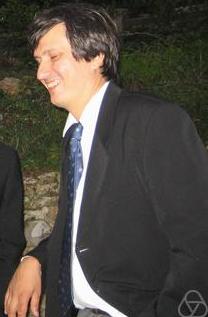
Maxim Lvovich Kontsevich is a Russian and French mathematician and mathematical physicist. He is a professor at the Institut des Hautes Études Scientifiques and a distinguished professor at the University of Miami. He received the Henri Poincaré Prize in 1997, the Fields Medal in 1998, the Crafoord Prize in 2008, the Shaw Prize and Breakthrough Prize in Fundamental Physics in 2012, and the Breakthrough Prize in Mathematics in 2015.

Raoul Bott was a Hungarian-American mathematician known for numerous foundational contributions to geometry in its broad sense. He is best known for his Bott periodicity theorem, the Morse–Bott functions which he used in this context, and the Borel–Bott–Weil theorem.
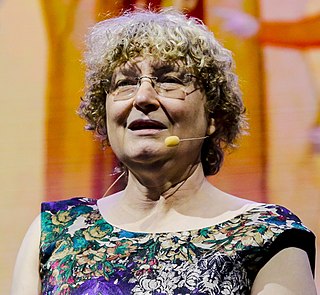
Baroness Ingrid Daubechies is a Belgian-American physicist and mathematician. She is best known for her work with wavelets in image compression.
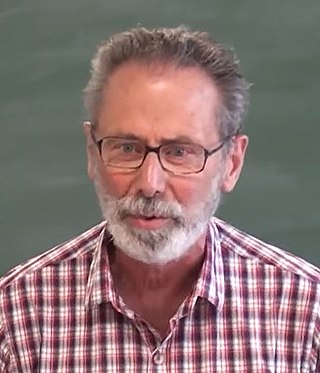
Yves F. Meyer is a French mathematician. He is among the progenitors of wavelet theory, having proposed the Meyer wavelet. Meyer was awarded the Abel Prize in 2017.
The Morgan Prize is an annual award given to an undergraduate student in the US, Canada, or Mexico who demonstrates superior mathematics research. The $1,200 award, endowed by Mrs. Frank Morgan of Allentown, Pennsylvania, was founded in 1995. The award is made jointly by the American Mathematical Society, the Mathematical Association of America, and the Society for Industrial and Applied Mathematics. The Morgan Prize has been described as the highest honor given to an undergraduate in mathematics.

Maryam Mirzakhani was an Iranian mathematician and a professor of mathematics at Stanford University. Her research topics included Teichmüller theory, hyperbolic geometry, ergodic theory, and symplectic geometry. On 13 August 2014, Mirzakhani was honored with the Fields Medal, the most prestigious award in mathematics, becoming the first woman to win the prize, as well as the first Iranian. The award committee cited her work in "the dynamics and geometry of Riemann surfaces and their moduli spaces". Mirzakhani was considered a leading force in the fields of hyperbolic geometry, topology and dynamics.

Clifford Henry Taubes is the William Petschek Professor of Mathematics at Harvard University and works in gauge field theory, differential geometry, and low-dimensional topology. His brother is the journalist Gary Taubes.
The Oswald Veblen Prize in Geometry is an award granted by the American Mathematical Society for notable research in geometry or topology. It was funded in 1961 in memory of Oswald Veblen and first issued in 1964. The Veblen Prize is now worth US$5000, and is awarded every three years.
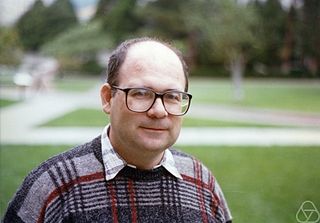
Dan-Virgil Voiculescu is a Romanian professor of mathematics at the University of California, Berkeley. He has worked in single operator theory, operator K-theory and von Neumann algebras. More recently, he developed free probability theory.

Tomasz Mrowka is an American mathematician specializing in differential geometry and gauge theory. He is the Singer Professor of Mathematics and former head of the Department of Mathematics at the Massachusetts Institute of Technology.

Barry Charles Mazur is an American mathematician and the Gerhard Gade University Professor at Harvard University. His contributions to mathematics include his contributions to Wiles's proof of Fermat's Last Theorem in number theory, Mazur's torsion theorem in arithmetic geometry, the Mazur swindle in geometric topology, and the Mazur manifold in differential topology.
The Millennium Prize Problems are seven well-known complex mathematical problems selected by the Clay Mathematics Institute in 2000. The Clay Institute has pledged a US $1 million prize for the first correct solution to each problem.

Sylvia Serfaty is a French mathematician working in the United States. She won the 2004 EMS Prize for her contributions to the Ginzburg–Landau theory, the Henri Poincaré Prize in 2012, and the Mergier–Bourdeix Prize of the French Academy of Sciences in 2013.
Lawrence David Guth is a professor of mathematics at the Massachusetts Institute of Technology.
The Ruth Lyttle Satter Prize in Mathematics, also called the Satter Prize, is one of twenty-one prizes given out by the American Mathematical Society (AMS). It is presented biennially in recognition of an outstanding contribution to mathematics research by a woman in the previous six years. The award was funded in 1990 using a donation from Joan Birman, in memory of her sister, Ruth Lyttle Satter, who worked primarily in biological sciences, and was a proponent for equal opportunities for women in science. First awarded in 1991, the award is intended to "honor [Satter's] commitment to research and to encourage women in science". The winner is selected by the council of the AMS, based on the recommendation of a selection committee. The prize is awarded at the Joint Mathematics Meetings during odd numbered years, and has always carried a modest cash reward. Since 2003, the prize has been $5,000, while from 1997 to 2001, the prize came with $1,200, and prior to that with $4,000. If a joint award is made, the prize money is split between the recipients.
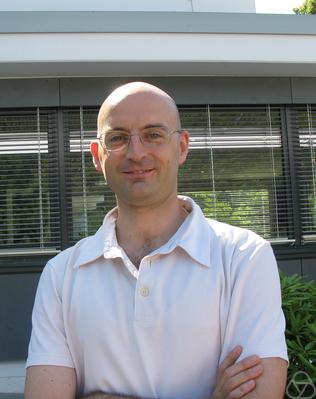
Camillo De Lellis is an Italian mathematician who is active in the fields of calculus of variations, hyperbolic systems of conservation laws, geometric measure theory and fluid dynamics. He is a permanent faculty member in the School of Mathematics at the Institute for Advanced Study. He was also one of the two managing editors of Inventiones Mathematicae.

The Princeton University Department of Mathematics is an academic department at Princeton University. Founded in 1760, the department has trained some of the world's most renowned and internationally recognized scholars of mathematics. Notable individuals affiliated with the department include John Nash, former faculty member and winner of the 1994 Nobel Memorial Prize in Economic Sciences; Alan Turing, who received his doctorate from the department; and Albert Einstein who frequently gave lectures at Princeton and had an office in the building. Fields Medalists associated with the department include Manjul Bhargava, Charles Fefferman, Gerd Faltings, Michael Freedman, Elon Lindenstrauss, Andrei Okounkov, Terence Tao, William Thurston, Akshay Venkatesh, and Edward Witten. Many other Princeton mathematicians are noteworthy, including Ralph Fox, Donald C. Spencer, John R. Stallings, Norman Steenrod, John Tate, John Tukey, Arthur Wightman, and Andrew Wiles.
Maggie Miller is a mathematician and an assistant professor in the mathematics department at the University of Texas at Austin. She was also a former Visiting Clay Fellow, and Stanford Science Fellow at Stanford University in the Mathematics Department. Her primary research area is low-dimensional topology.
References
- 1 2 American Mathematics Society, Maryam Mirzakhani Prize in Mathematics (formerly named the National Academy of Sciences Award in Mathematics)
- 1 2 National Academy of Sciences online, Maryam Mirzakhani Prize in Mathematics, article retrieved January 7, 2025
- 1 2 3 4 5 6 7 8 NAS Award in Mathematics, National Academy of Sciences, retrieved 2015-12-10.
- ↑ "Maryam Mirzakhani Prize in Mathematics". nasonline.org. Retrieved 2023-07-10.
- ↑ "Sylvia Serfaty". www.nasonline.org. Retrieved 2024-05-05.
- ↑ "2022 Maryam Mirzakhani Prize in Mathematics"
- ↑ "2020 Maryam Mirzakhani Prize in Mathematics". NAS. February 20, 2020. Retrieved February 20, 2020.
Guth is receiving the $20,000 prize 'for developing surprising, original, and deep connections between geometry, analysis, topology, and combinatorics, which have led to the solution of, or major advances on, many outstanding problems in these fields.'
- ↑ Kehoe, Elaine (May 2012), "Hopkins Receives NAS Award in Mathematics" (PDF), Notices of the American Mathematical Society , 59 (5): 678, doi: 10.1090/noti847 .
- ↑ Jackson, Allyn (May 2008), "Taubes Receives NAS Award in Mathematics" (PDF), Notices of the American Mathematical Society , 55 (5): 596–597.
- ↑ Jackson, Allyn (May 2004), "Voiculescu Receives NAS Award in Mathematics" (PDF), Notices of the American Mathematical Society , 51 (5): 547.
- ↑ Jackson, Allyn (May 2000), "Ingrid Daubechies Receives NAS Award in Mathematics" (PDF), Notices of the American Mathematical Society , 47 (5): 571.
- ↑ Coates, John (July 1996), "Wiles Receives NAS Award in Mathematics" (PDF), Notices of the American Mathematical Society , 43 (7): 760–763.